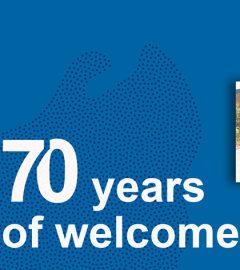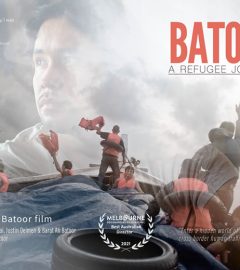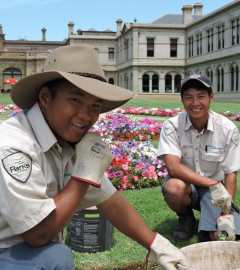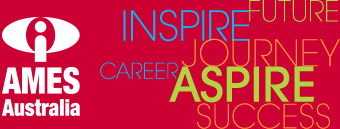The solution to Australia’s skills shortage hiding in plain sight: Opinion
Meena Naidu, General Manager Education and Participation | AMES Australia
In Australia today, like the proverbial chameleon in the crowd, there is an issue and its solution hiding in plain sight.
Migrants and refugees are struggling to get jobs that befit their skills and experience. At the same time, we have a critical skills shortage.
Migrants and refugees face barriers including a lack of local experience and networks, English language proficiency or pronunciation and a lack of familiarity with Australian workplace culture and the job market.
There are also difficulties and barriers, including exorbitant costs, in getting overseas qualifications recognised in Australia.
These structural barriers inhibit positive migrant and refugee career outcomes. Also, employers can be reticent or unsure about hiring migrants and refugees and mainstream employment services often are either not accessible or unsuited to migrants and refugees.
Easily available statistics and research paint a picture of the effect of this situation.
Migrants from non-English speaking countries suffer persistent wage gaps and overseas educated migrants learn less than similarly qualified Australians, particularly those from culturally diverse backgrounds.
Poor English can affect employment with 44 per cent of migrants and refugees working below their skill level even though 57 per cent of them hold university qualifications. And strong accents or a lack of knowledge of local industry jargon exacerbates the problem.
At the same time. we know there are critical workforce shortages across a plethora of sectors.
The current shortfall of GPs in Australia will rise to 3,900 in 2028 and to more than 8.900 in 2028; and the undersupply of nurses will rise to almost 80,000 by 2035.
Engineers Australia has reported the nation’s engineering skills and labour shortage is at its highest level in a decade.
And Master Builders Australia says 130,000 extra tradies will be needed by 2029 to meet the growing demand for new housing.
The Commonwealth Government’s Jobs and Skills Australia agency has estimated that 67 occupations covered by the ‘Technicians and Trades Workers’ category are in chronic and long-term shortage, representing about a third of all skills shortages across the country.
These shortages are pushing up construction costs and are worse in rural and regional areas, many of which are vulnerable to natural disasters.
The boom in renewable energy, data centres to support AI and major infrastructure projects as well as our aging populations and increased demand in care sectors mean these shortages are neither short term nor geographically limited.
Making matters worse is global competition for skilled migrants, competition between states within Australia for workers with critical skills and the leakage of skilled workers from regional areas to the cities.
But this situation is also an economic opportunity for Australia.
Better harnessing the skills and experience of migrants would deliver economic dividends through addressing professional workforce shortages, boosting productivity and reducing the overall cost of creating the professional workforce we need.
This is evidenced in some simple numbers. It costs Australia anywhere from $180,000 to $500,000 – including Commonwealth Place Supported funding – to produce a registered doctor. For overseas trained medicos, that figure is around $28,500 – and it could be lower with more streamlined qualifications recognition.
Better utilising migrant and refugee skills would also deliver a social dividend through the better integration of newcomers into the community, thus bolstering social cohesion, and though supporting disadvantaged cohorts of migrants and refugees.
To do this we need to address the three pillars of the problem: providing access to gap training and qualification recognition; preparing people for Australia’s workplace culture and environment and addressing employer attitudes and bias toward international skills.
Practically, what this means is a collective approach to reduce the cost and simplify the processes for requalification and qualification, with clearly communicated pathways. We need to support employers to be more confident about overseas trained staff through incentives and programs to address discrimination.
This includes our looking at our recruitment practices and critically assessing whether they are a barrier to accessing migrant talent,
And we need to support migrants and refugees with job readiness training initiatives, such as the Skilled Professional Migrant Program (SPMP) delivered by my organisation AMES Australia.
Recently, we commissioned an economist to run the numbers on the effect of a national roll out of the SPMP, a scheme that has proven record of supporting migrants and refugees into jobs commensurate with their skills and qualifications.
The paper, produced by Dr Ian Pringle, found utilising the skills and experience migrants and refugees bring with them could benefit Australia’s economy by as much as $10 billion over five years.
It found supporting new arrivals to re-establish their professional careers in Australia could generate more than $2.5 billion in extra tax receipts as well as an extra $8 billion in earnings circulating in the economy over five years.
What’s more is that the extra access to skills could also produce a ten per cent spike in productivity.
The skills gap is an issue that has evolved again and again over time. Historically, Australia’s response has been a siloed approach when what we have is an economic problem that needs a systemic all-of-the-economy response.
It’s a problem that we have identified but failed to properly pin down and solve over decades.
That’s the reason why Australia needs a national and integrated initiative to harness the skills of migrants and refugees, while reaping the economic and social benefits that it would bring before that chameleon changes its colour and disappears into the crowd again.













